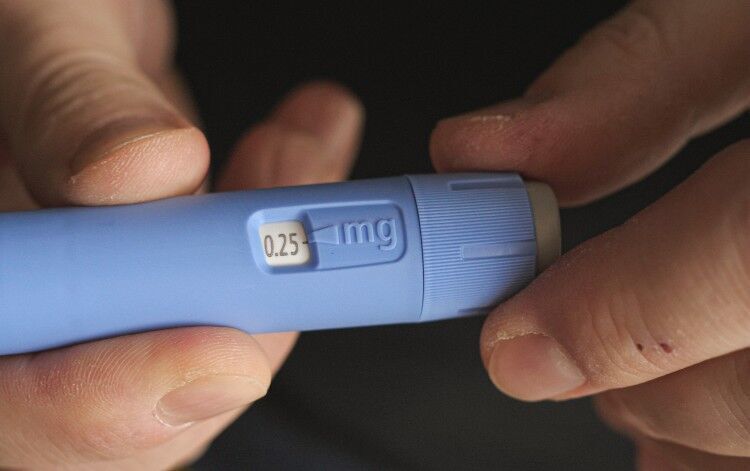The National Institute for Health and Care Excellence (NICE) has recommended that tirzepatide be prescribed by NHS primary care services, in draft guidance currently out for consultation.
The weekly injection has been recommended alongside diet and exercise advice for people with a BMI of at least 35kg/m2 and one weight-related comorbidty with lower thresholds for people from some ethnic minority backgrounds.
But in contrast to NICE recommendations for semaglutide which limited use to tier 3 specialist weight management services, the committee said tirzepatide (Mounjaro, Eli Lilly) could be given in primary care if supporting services were in place.
It followed a submission from the drug company that the diet and exercise component of its key trial of the drug was ‘light-touch’. The committee was also shown the results of a survey which said diet and exercise advice was already being provided in primary care.
And the committee heard from experts that access to the drug in primary and secondary care would be welcomed due to limited access to specialist services.
Related Article: Vaping trends stall following regulation announcement
The draft guidelines also noted that obesity services in the NHS are ‘changing rapidly’.
NICE did however note that there is ‘uncertainty around the level of additional diet and exercise support that would need to be implemented alongside tirzepatide in primary care’.
In another departure from guidelines on semaglutide treatment, which is limited to two years, the committee did not give advice on how long tirzepatide should be given for.
The guidance is based on data from the SURMOUNT-1 study which reported that after 72 weeks 96.3% of those on tirzepatide had lost 5% or more body weight, compared with 27.9% in the placebo group who also received diet and exercise advice.
Average weight loss with a 15mg dose was 20% compared with the placebo group who also had diet and exercise advice.
The makers of tirzepatide had asked for it to be made available to those with a BMI of at least 30 kg/m2 but NICE ruled this would not be a cost-effective use of NHS resources.
But a lower BMI threshold of >32.5kg/m2is recommended for people from South Asian, Chinese, other Asian, Middle Eastern, Black African or African-Caribbean ethnic backgrounds.
Dr Stephanie deGiorgio, a GP in Kent with an interest in obesity, said the consultation document provided some interesting progress in the use of medication to treat obesity.
Related Article: NHSE to ‘expand’ community pharmacy RSV vaccine offer
‘There are very few tier 3 weight loss services offering semaglutide, despite NICE guidance, and community prescribing pilots have been very slow to get off the ground due to no extra funding being given and significant limitation imposed.’
She added that bringing services into the community will be vital to enable better access but that must come with resourcing. In the meantime private services are ‘absolutely booming’ which is widening health inequalities and raises issues of oversight.
‘This two-tier system is not what healthcare in the UK should be and we are also losing the opportunity to do good studies on the real-life efficacy of these medications and to look at issues like weight regain and if sarcopenia is an issue,’ she added.
Dr Nerys Astbury, associate professor of diet and obesity at the University of Oxford, said the difference in the committee recommendations from semaglutide could widen access, while having more options could also drive down cost.
‘However, as the numbers of people living with overweight and obesity continues to increase, there are likely to be challenges in implementing additional services to meet the increasing demand for these treatment options in the future.
Related Article: Afternoon inhaler use gives effective asthma control, study finds
‘This may be particularly felt in the already overstretched primary care sector, where GPs may feel that they do not have the have capacity to cope with potentially increased demand as well as the need to implement additional weight management services that these new recommendations are likely to bring.’
The guidelines are out for consultation until 5pm Tuesday 25 June.
A version of this article first appeared on our sister site Pulse.
NICE draft guidance: Tirzepatide for managing overweight and obesity
1.1 Tirzepatide is recommended as an option for managing overweight and obesity, alongside a reduced-calorie diet and increased physical activity, in adults, only if they have:
Related Article: Vaping trends stall following regulation announcement
- an initial body mass index (BMI) of at least 35 kg/m2 and
- at least 1 weight-related comorbidity.
Use lower BMI thresholds (usually reduced by 2.5 kg/m2) for people from South Asian, Chinese, other Asian, Middle Eastern, Black African or African-Caribbean ethnic backgrounds.
Related Article: NHSE to ‘expand’ community pharmacy RSV vaccine offer
1.2 Consider stopping tirzepatide if less than 5% of the initial weight has been lost after 6 months of treatment.
Source: NICE
Related Article: Afternoon inhaler use gives effective asthma control, study finds


Have your say
Please add your comment in the box below. You can include links, but HTML is not permitted. Please note that comments are not moderated before publication and the views expressed are those of the user and do not reflect the views of The Pharmacist. Remember that submission of comments is governed by our Terms and Conditions. You can also read our full guidelines on article comments here – but please be aware that you are legally liable for any libellous or offensive comments that you make. If you have a complaint about a comment or are concerned that a comment breaches our terms and conditions, please use the ‘Report this comment’ function to alert our web team.